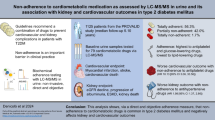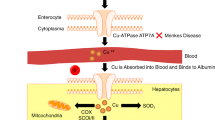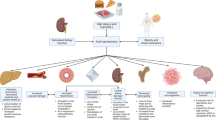Abstract
We measured selenium (Se) levels in the urine and blood plasma samples of 72 Saudi Arabian patients with dilated cardiomyopathy (DCM) and 70 control subjects of the same origin. To correct for differences in the hydration state of the subjects, the selenium concentration for each urine sample was normalized by dividing it by the concentration of creatinine (CREAT) in the same sample. The median (and range) of the values found for the concentration of Se in plasma, urine, and normalized concentration in urine for the control subjects was 1.306 (0.66–2.50) μM, 0.478 (0.05–2.00) μM, and 56.7 (10.6–426.5) μM Se/M CREAT, respectively, whereas, for the patients, it was 1.246 (0.53–2.45) μM, 0.39 (0.05–1.90) μM, and 75.1 (4.9–656.2) μM Se/M CREAT, respectively. Additionally, the patients were separated into three subgroups according to the severity of their disease state as judged by NYHA procedure, and were then compared to the control group. Only group 4 (the most severe state of the disease) had a significantly lower concentration of urinary Se than the control group. However, the difference became nonsignificant when normalized for CREAT levels. There was no significant difference in the plasma Se levels between the controls and any of the patient groups. As the plasma Se in the control group and in the DCM patients both fell on the low end of the “normal” range, with the patients being marginally lower than the controls, there is no firm evidence from this study to suggest that Se is related to the high incidence rate of DCM found in Saudi Arabia.
Similar content being viewed by others
References
J. Neve, E Vertongen, and L. Molle, Selenium deficiency,Clin. Endocrinol. Metab. 14, 629–656 (1985).
J. T. Rotruck, A. L. Pope, H. E. Ganther, A. B. Swanson, D. G. Hafeman, and W. G. Hoekstra, Selenium biochemical role as a component of glutathione peroxidase,Science 179, 588–590 (1973).
T. Rannem, K. Ladefoged, E. Hylander, J. Christiansen, H. Laursen, J. H. Kristensen, et al., The effect of selenium supplementation on skeletal and cardiac muscle in seleniumdepleted patients,J. Parenter. Enter. Nutr. 19, 351–355 (1995).
G. D. Cawley and R. Bradley, Sudden death in calves associated with acute myocar- dial degeneration and selenium deficiency,Vet. Rec. 103, 239–240 (1978).
W. G. Hoekstra, Biochemical function of selenium and its relation to vitamin E,Fed. Proc. 34, 2083–2089 (1975).
C. D. Thomson and M. F. Robinson, Selenium in human health and disease with emphasis on those aspects peculiar to New Zealand,Am. J. Clin. Nutr. 33, 303–323 (1980).
J. T. Salonen, G. Alfthan, J. K. Huttunen, J. Pikkarainen, and P. Puska, Association between cardiovascular death and myocardial infarction and serum selenium in a matched-pair longitudinal study,Lancet 2, 175–179 (1982).
Keshan Diseases Research Group of the Chinese Academy of Medical Sciences, Epidemiological studies on the etiologic relationship of selenium and Keshan disease,Chin. Med. J. 92, 477–482 (1979).
X. Chen, G. Yang, J. Chen, Z. Wen, and K. Ge, Studies on the relations of selenium and Keshan disease,Biol. Trace Element Res. 2, 91–107 (1980).
Y. Khan, Keshan disease and the selenium research of China,Pedorojisuto 33, 201–212 (1989).
R. A. Johnson, S. S. Baker, J. T. Fallon, E. P. Maynard III, J. N. Ruskin, Z. Wen, et al., An occidental case of cardiomyopathy and selenium deficiency,New Engl. J. Med. 304, 1210–1212 (1981).
R. A. Quercia, S. Korn, D. O’Neill, J. E. Dougherty, M. Ludwig, R. Schweizer, et al., Selenium deficiency and fatal cardiomyopathy in a patient receiving long-term home parenteral nutrition,Clin. Pharm. 3, 531–535 (1984).
Keshan Disease Research Group of the Chinese Academy of Medical Sciences, Observations on the effect of sodium selenite in prevention of Keshan disease,Chin. Med. J. 92, 471–476 (1979).
A. Cenac, M. Simonoff, and A. Djibo, Nutritional status and plasma trace elements in peripartum cardiomyopathy. A comparative study in Niger,J. Cardiovasc. Risk 3, 483–487 (1996).
B. M. Dworkin, P. P. Antonecchia, F. Smith, L. Weiss, M. Davidian, D. Rubin, et al., Reduced cardiac selenium content in the acquired immunodeficiency syndrome,J. Parenter. Enter. Nutr. 13, 644–647 (1989).
A. L. Kavanaugh-McHugh, A. Ruff, E. Perlman, N. Hutton, J. Modlin, and S. Rowe, Selenium deficiency and cardiomyopathy in acquired immunodeficiency syndrome,J. Parenter. Enter. Nutr. 15, 347–349 (1991).
R. W. Marcus, Myopathy and cardiomyopathy associated with selenium deficiency: case report, literature review, and hypothesis,Maryland Med. J. 42, 669–674 (1993).
M. S. Alaejos and C. D. Romero, Urinary selenium concentrations,Clin. Chem. 39, 2040–2052 (1993).
M. S. Noah, Dilated cardiomyopathy in Saudi Arabia: a review of 55 cases,Trop. Geog. Med. 38, 283–286 (1986).
A. El-Yazigi and E. Legayada, Urinary selenium in healthy and diabetic Saudi Arabians,Biol. Trace Element Res. 52, 55–63 (1996).
T. M. T. Sheehan and M. Gao, Simplified fluorometric assay of total selenium in plasma and urine,Clin. Chem. 36, 2124–2126 (1990).
I. Al-Saleh, I. Al-Doush, and R. Faris, Selenium levels in breast milk and cow’s milk: a preliminary report from Saudi Arabia,J. Environ. Pathol. Toxicol. Oncol. 16, 41–46 (1997).
D. L. Palmquist, A. L. Moxon, and A. H. Cantor, Pattern of urinary excretion in normal adults,Fed. Proc. 38, 391 (1979).
R. Hasunuma, M. Tsuda, T. Ogawa, and Y. Kawanishi, Urinary selenium levels in Japanese males and females,Bull. Environ. Contam. Toxicol. 44, 501–507 (1990).
W. Wasowicz and B. A. Zachara, Selenium concentrations in the blood and urine of a healthy Polish sub-population,J. Clin. Chem. Clin. Biochem. 25, 409–412 (1987).
J. Alexander, Y. Thomassen, and J. Aaseth, Increased urinary excretion of selenium among workers exposed to elemental mercury vapor,J. Appl. Toxicol. 3, 143–145 (1983).
M. S. Bratakos, H. C. Kanaki, A. Vasiliou-Waite, and P. V. Ioannou, The nutritional selenium status of healthy Greeks,Sri. Total Environ. 91, 161–176 (1990).
D. M. Hadjimarkos and T. R. Shearer, Selenium content of human nails: a new index for epidemiologic studies of dental caries,J. Dent. Res. 52, 389 (1973).
A. Geahchan and P. Chambon, Fluorometry of selenium in urine,Clin. Chem. 26, 1272–1274 (1980).
Y. Hojo, Subject groups high and low in urinary selenium levels: workers exposed to heavy metals and patients with cancer and epilepsy,Bull. Environ. Contam. Toxicol. 26, 466–471 (1981).
S. K. Dutta, P. A. Miller, L. Greenberg, and O. A. Levander, Evidence for selenium depletion in alcoholic subjects admitted for detoxification,Am. J. Clin. Nutr. 35, 845 (1982).
M. E. Shils, J. A. Olson, and M. Shike,Modern Nutrition in Health and Disease, 8th ed., pp. 246–247 (1994).
Z. Pawlowicz, B. A. Zachara, U. Trafikowska, A. Maciag, E. Marchaluk, and A. Nowicki, Blood selenium concentrations and glutathione peroxidase activities in patients with breast cancer and advanced gastrointestinal cancer,J. Trace Elem. Electrol. Health Dis. 5, 275–277 (1991).
S. G. Bukkens, N. de Vos, F. J. Kok, E. G. Schouten, A. M. de Bruijin, and A. Hofman, Selenium status and cardiovascular risk factors in healthy Dutch subjects,J. Am. Col. Nutr. 9, 128–135 (1990).
C. D. Thomson and M. E. Robinson, The changing selenium status of New Zealand residents,Eur. J. Clin. Nutr. 50, 107–114 (1996).
L. C. Clark, G. F. Combs, B. W. Turnbull, E. H. Slate, D. K. Chalker, J. Chow, et al., Effects of selenium supplementation for cancer prevention in patients with carcinoma of the skin: a randomized controlled trial,JAMA 276, 1957–1963 (1996).
J. F. Zazzo, J. Chalas, A. Lafont, F. Camus, and P. Chappuis, Is nonobstructive cardiomyopathy in AIDS a selenium deficiency-related disease?J. Parenter. Enteral. Nutr. 12, 537–538 (1988).
Author information
Authors and Affiliations
Rights and permissions
About this article
Cite this article
Raines, D.A., Kimsara, A.J., Fawzy, M.E. et al. Plasma and urinary selenium in Saudi Arabian patients with dilated cardiomyopathy. Biol Trace Elem Res 69, 59–68 (1999). https://doi.org/10.1007/BF02783915
Received:
Revised:
Accepted:
Issue Date:
DOI: https://doi.org/10.1007/BF02783915




